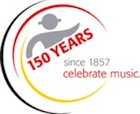David's Tip of the Day: Parts of the Tongue, Part 3 - Middle-Front
Behind the blade of the tongue (what we'll call the middle-front) is the area used to control draw bends on holes 5 and 6, and blow bends on holes 7 through 10. This area of the tongue requires the most training and time to develop. The middle or back of the tongue is easy to raise and interact with the roof of the mouth. The middle-front has the challenge of working in the area of the mouth where there's a sharp curvature, between the Post-alveolar and Pre-palatal (location 5 and 6 in the diagram here http://en.wikipedia.org/wiki/Alveolar_consonants). Our closest analog in speech is is "ch," as in the ch of chum.
This part of the tongue is also used when tongue blocking and performing 5-hole draw octaves (like 5 and 9 draw F) on the diatonic harmonica or standard octaves on the chromatic harmonica. You've probably discovered the theme by now in tongue blocking... the more holes you need to cover, the more of the back, wider part of the tongue you'll use (with the tip commonly sliding more and more below the harmonica, accessing more of the top of the tongue).

